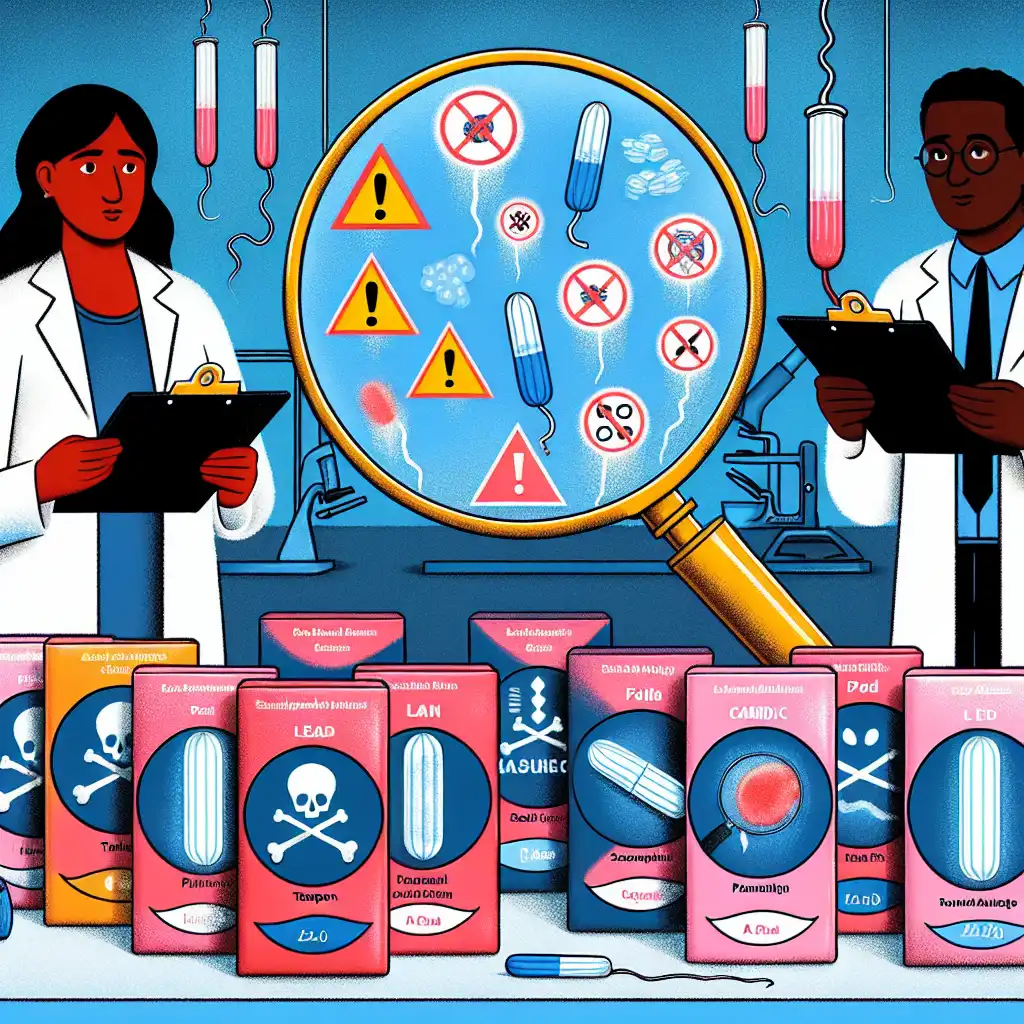In recent research conducted by the University of California, Berkeley, and Columbia University, fourteen popular tampon brands sold in the U.S., U.K., and European Union have been found to contain toxic metals, including lead, arsenic, and cadmium. Newsweek reported on these findings, which identified a total of 16 toxic metals in the 30 tampon products tested. However, the researchers have not disclosed the specific brands that were evaluated or which ones had the most concerning results. The study’s findings were published in the journal Environment International.
Table of Contents
ToggleIntroduction
Tampons are essential products for many women, but recent studies have raised alarms about their safety. The latest research indicates that several popular brands contain harmful metals that could pose significant health risks. The presence of these metals in menstrual products is particularly concerning given their direct contact with a sensitive area of the body. This article delves into the details of the study, highlights the metals found, and discusses the potential health implications.
Public health researchers have long been concerned about the chemicals present in everyday products. However, there has been surprisingly little research focused on tampons, despite their widespread use. This gap in knowledge is particularly troubling given the potential for these products to introduce harmful substances into the body. As lead study author Jenni A. Shearston pointed out, this study is pioneering in its focus on measuring metals in tampons, revealing alarming concentrations of toxic substances.
Key Findings of the Study
Toxic Metals Identified
The study identified 16 types of metals in the tested tampon products, including:
- Arsenic
- Barium
- Calcium
- Cadmium
- Cobalt
- Chromium
- Copper
- Iron
- Manganese
- Mercury
- Nickel
- Lead
- Selenium
- Strontium
- Vanadium
- Zinc
Variation by Product Type and Origin
The concentration of these metals varied based on several factors, including:
- Country of Purchase: Tampons bought in different countries showed varying levels of metal contamination.
- Brand Type: Store-brand and name-brand tampons exhibited different metal concentrations.
- Organic vs. Non-Organic: Organic tampons generally had higher lead levels but lower arsenic levels compared to non-organic tampons.
Researchers emphasized that no amount of lead exposure is safe for human reproductive health. None of the brands tested were significantly lower in metal concentration than others, underscoring the need for industry-wide scrutiny.
Health Implications
The presence of toxic metals in tampons is a significant public health concern. Lead and arsenic are well-known for their harmful effects on human health. Lead exposure, even in small amounts, can cause severe reproductive health issues. Arsenic exposure is linked to various cancers and other chronic diseases. The study’s findings highlight the urgent need for stricter regulations and comprehensive testing of menstrual products.
Factors Contributing to Metal Contamination
Manufacturing Processes
The metals could have entered the tampons through various stages of the manufacturing process. Contaminated raw materials, inadequate filtration systems, and poor quality control are potential sources of these harmful substances. Further research is needed to pinpoint the exact pathways of contamination.
Environmental Factors
Environmental contamination is another possible source of these metals. Agricultural practices involving the use of pesticides and fertilizers can introduce metals into cotton, the primary material used in many tampons. Additionally, water sources used in the manufacturing process may also be contaminated.
Public Response and Regulatory Action
Call for Transparency
Lead author Jenni A. Shearston expressed hope that manufacturers would be required to test their products for metals, particularly toxic ones. She also called for better labeling on tampons and other menstrual products to inform consumers about potential risks.
Legislative Efforts
The findings of this study come on the heels of other research highlighting the presence of harmful chemicals in menstrual products. For instance, a 2023 study from the University of Notre Dame found polyfluoroalkyl chemicals (PFAs) in 123 menstrual products sold in the U.S. Similarly, a 2022 consumer watchdog study reviewed by Carnegie Mellon University researchers found PFAs in 22% of tampon brands tested. California lawmakers have made attempts to ban PFAs in tampons sold in the state, signaling a growing awareness of the issue.
Consumer Guidance
Choosing Safer Products
While the study did not specify which brands were tested, consumers can take steps to choose safer menstrual products. Opting for products labeled as organic and free from harmful chemicals can be a good starting point. However, it’s important to note that the study found variations in metal concentrations even among organic products.
Advocating for Change
Consumers can also play a role in advocating for safer products. By demanding transparency from manufacturers and supporting legislative efforts to regulate harmful substances in menstrual products, consumers can help drive change in the industry.
FAQs
What are the health risks of using tampons with toxic metals?
Exposure to toxic metals like lead and arsenic can lead to severe reproductive health issues and chronic diseases, including cancer.
Are organic tampons safer than non-organic ones?
The study found that organic tampons had higher lead levels but lower arsenic levels compared to non-organic tampons. While organic products may reduce exposure to certain chemicals, they are not entirely free from harmful substances.
What steps can I take to choose safer menstrual products?
Opt for products labeled as organic and free from harmful chemicals. However, it’s important to stay informed and advocate for better labeling and transparency from manufacturers.
What is being done to regulate harmful substances in menstrual products?
Legislative efforts, such as those in California to ban PFAs in tampons, are underway. Public health researchers are also calling for stricter regulations and comprehensive testing of menstrual products.
Conclusion
The recent study highlighting the presence of toxic metals in popular tampon brands underscores the urgent need for greater scrutiny and regulation of menstrual products. With significant health risks associated with exposure to metals like lead and arsenic, it is crucial for manufacturers to test their products and provide transparent labeling. Consumers can play a vital role by staying informed, choosing safer products, and advocating for change. As research continues to uncover the hidden dangers in everyday products, a collective effort is needed to ensure public health and safety.
In summary, while tampons are essential for many women, the discovery of toxic metals in these products raises significant health concerns. The study by UC Berkeley and Columbia University serves as a wake-up call for both consumers and manufacturers. By taking steps to choose safer products and advocating for stricter regulations, we can work towards a future where menstrual products are free from harmful substances.










